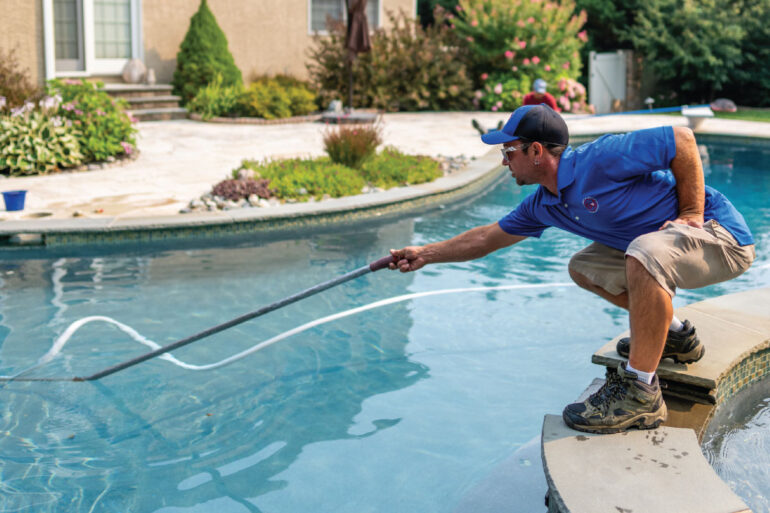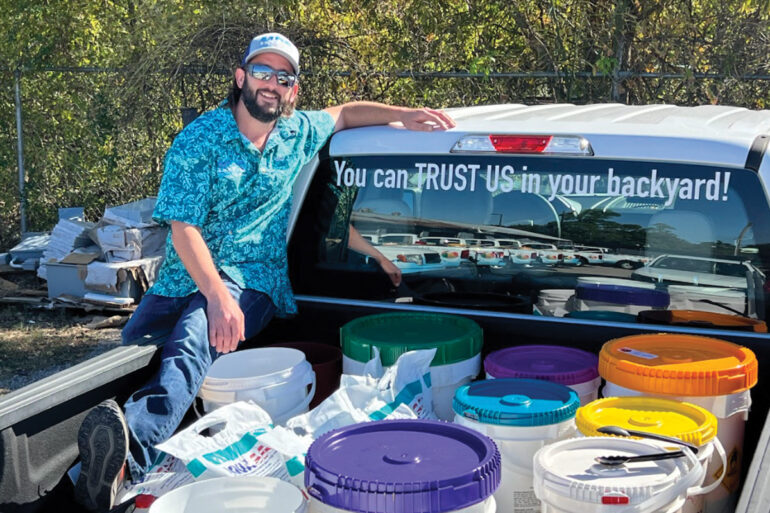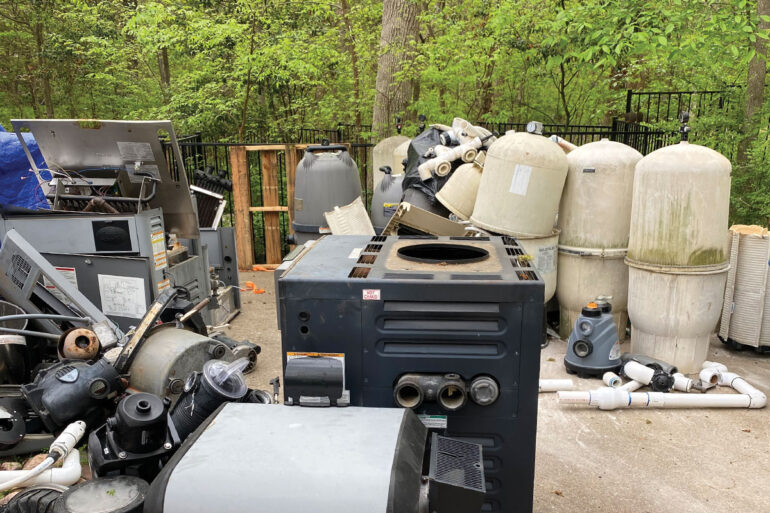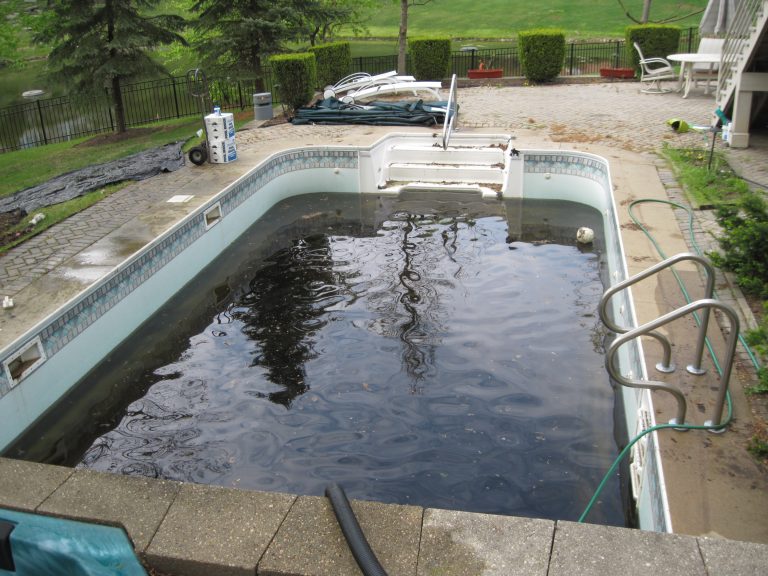Fiberglass Pools Repair
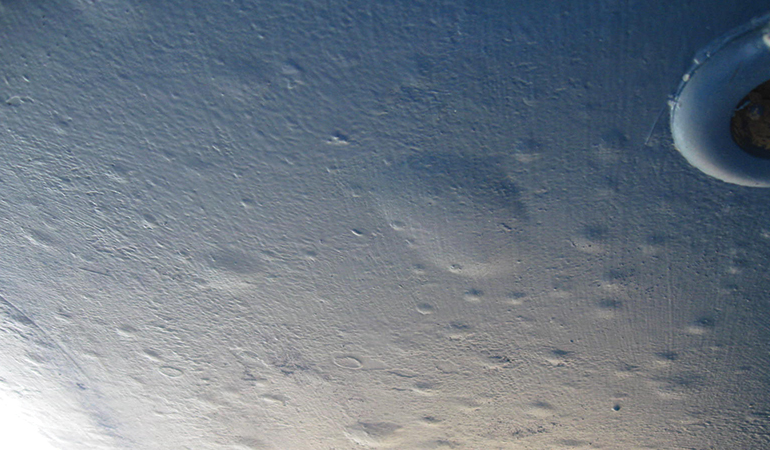
By Lawrence Scofield
Fiberglass pools have vastly improved over the past decade. There is rarely a problem with today’s shells. “If it’s installed correctly, you should never have a problem,” says Jason Hughes, vice president of River Pools and Spas in Tappahannock, Virginia.
To prevent fiberglass problems, focus on proper installation techniques. “The backfill material is critical,” Hughes says, who is vice chair of the Association of Pool & Spa Professionals’ Fiberglass Pool Manufacturers Council. Best practices call for gravel backfill. “Ten years ago, people were using sand backfill,” he says. “We don’t want the backfill to move. Water must pass through the backfill strata to make sure the pool sits undistorted. Fiberglass pools should have a drain pipe, a de-watering system that removes ground water so the pool can be safely drained.”
When problems do occur, the first step in repairing a fiberglass pool is to make sure an authorized manufacturer drains the pool, Hughes says, adding that once the pool is safely drained, certain environmental conditions must be present for a successful repair job. “The surface we use is a gelcoat product,” Hughes says. “The air temperature needs to be 65 degrees or more. There can’t be any moisture introduced for 48 hours. If you don’t have these conditions, the gelcoat will haze over.” Once the pool is safely drained and the environmental conditions met, repairs can begin.
The most common problems and their remedies
Gelcoat cracks need immediate attention and may spread if not repaired. “Gelcoat thickness is directly related to whether the gelcoat will crack,” Hughes says. “Gelcoat is the least flexible of the layers of that laminate structure. Ideal gelcoat level is around 30 millimeters. If it’s thicker, it’s in danger of cracking.” The solution is to grind out those cracks and fill with a new layer of gelcoat.
Older fiberglass pools occasionally see blistering in shells 20 to 30 years old. Hughes says grind them down and let the moisture weep out. After that, a vinyl ester resin is applied to provide a water barrier, then gelcoat to finish.
Discoloration stems from poor maintenance. “Color changes in one area is a different issue than fading, which is a natural phenomenon,” Hughes says. “The causes for discoloration are usually water chemistry–related. Higher concentrations of chlorine in one area, such as coming out of a return jet, are to blame.” Grind out the discolored area, add gelcoat and make sure the water chemistry issues are corrected.
Where large areas are affected, the repairs may be noticeable afterward. “Structurally, the repairs will be stronger than the pool itself,” Hughes says. “But the aesthetic quality will be compromised.”
The pool may need to be refinished for repairs to be inconspicuous. “Epoxy-based paints that roll on can be applied to the entire surface,” Hughes says. Another option is a spray-on polymer that will refinish a fiberglass pool.
An expert repair job can extend a pool’s life indefinitely. Identifying problems, safely draining the pool and waiting for the right environmental conditions can help ensure a successful repair.

